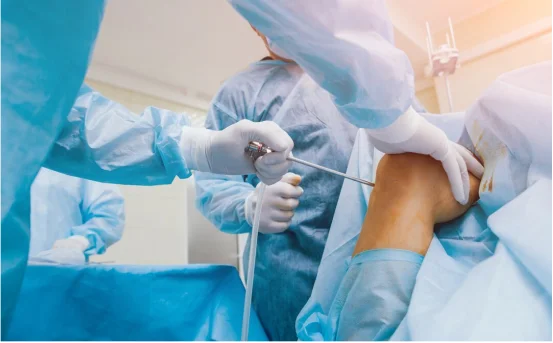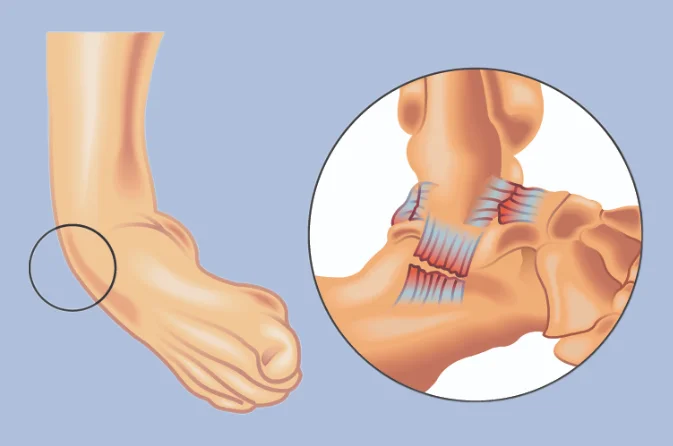Arthroscopy is a minimally invasive surgical technique used to diagnose and treat joint conditions. Unlike traditional open surgeries, arthroscopy involves inserting a small camera (arthroscope) and surgical instruments through tiny incisions. This approach allows surgeons to see inside the joint and perform precise procedures without making large cuts. It is often referred to as “keyhole surgery” and is known for quicker recovery, reduced pain, and minimal scarring.
Arthroscopy is commonly performed on joints like the knee, shoulder, hip, ankle, wrist, and elbow. The procedure is not only used to confirm diagnoses but also to treat conditions such as ligament tears, cartilage damage, bone fragments, and joint inflammation. Understanding how arthroscopy surgery is performed can help patients prepare and feel more confident about the treatment process.
What is Arthroscopy?
Arthroscopy is a surgical technique that allows doctors to look inside a joint using a small camera, known as an arthroscope. This device sends real-time images to a screen, helping the surgeon examine, diagnose, and treat the joint without making large cuts.
Since the incisions are small, this type of surgery causes less tissue damage, reduces the risk of infection, and speeds up recovery compared to open joint surgery. It’s commonly used for injuries such as torn ligaments, damaged cartilage, or persistent joint pain that hasn’t responded to conservative treatment.
Arthroscopy Surgery Procedure
- Pre-Surgery Evaluation :- Before the procedure, patients undergo a physical exam and may be asked to do imaging tests like an MRI or X-ray to help the doctor understand the joint’s condition. Patients are usually advised to stop eating or drinking for several hours before surgery.
On the day of the operation, you’ll be admitted to the hospital or surgical center. A nurse will place an IV line to administer fluids and medications. Depending on the joint being treated and the complexity of the procedure, you may receive general anesthesia (to sleep through the procedure) or regional anesthesia (to numb only the area being treated).
- Anesthesia and Preparation :- On the day of surgery, the patient is administered either general, spinal, or local anesthesia depending on the joint being treated. Once anesthesia takes effect, the area around the joint is cleaned and sterilized. Small incisions are made to insert the arthroscope and surgical instruments.
- Inserting the Arthroscope :- The arthroscope, which is a small camera, is inserted into the joint through one of the incisions. It sends real-time images to a monitor, allowing the surgeon to see the inside of the joint clearly. Saline may be used to expand the joint space for better visibility.
- Surgical Repair :- Through additional small incisions, thin instruments are inserted to trim, remove, or repair damaged tissues. Common procedures include treating meniscus or cartilage tears, removing bone fragments, or smoothing rough surfaces. The exact steps vary depending on the joint and condition.
- Closing the Incisions :- Once the repairs are completed, the instruments and camera are removed. The incisions are closed using sutures or adhesive strips and covered with sterile bandages. Since the cuts are small, healing is generally fast and scarring is minimal.
- Post-Surgery Recovery :- Patients are moved to a recovery area and monitored for a few hours. Most arthroscopy procedures are done on a day-care basis, meaning patients can return home the same day. Pain and swelling are managed with medications and cold compresses. The surgeon provides instructions for wound care, activity restrictions, and follow-up visits.
- Rehabilitation :- Recovery time varies depending on the joint treated and the complexity of the repair. Physical therapy may begin within a few days to restore joint strength and flexibility. Most patients can resume light activities within a week and return to full activity in a few weeks.
Conclusion
Arthroscopy surgery offers a less invasive and highly effective solution for many joint problems. With smaller incisions, reduced pain, and faster recovery, it has become the preferred option for both diagnosis and treatment of joint conditions.
Whether you’re dealing with a sports injury, chronic joint pain, or unexplained stiffness, arthroscopy can provide relief and restore joint function. With proper post-operative care and guidance from an orthopedic specialist, patients often return to active, pain-free lives in a relatively short time.























